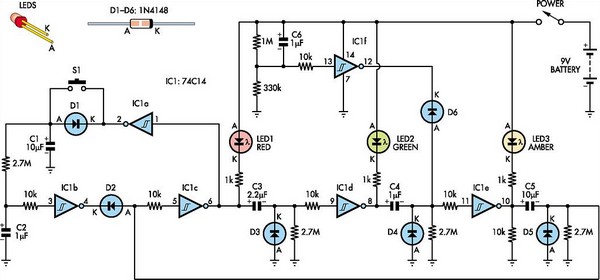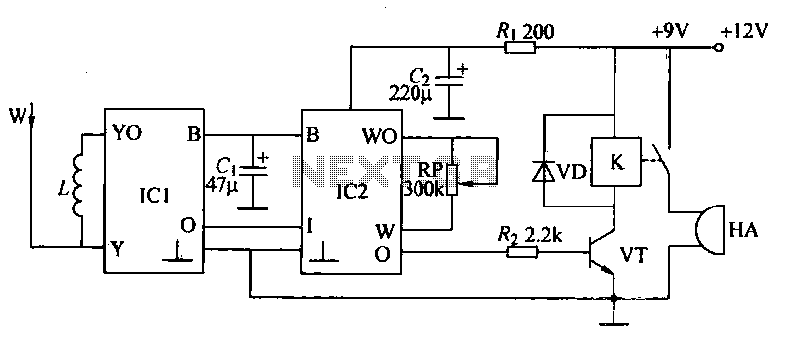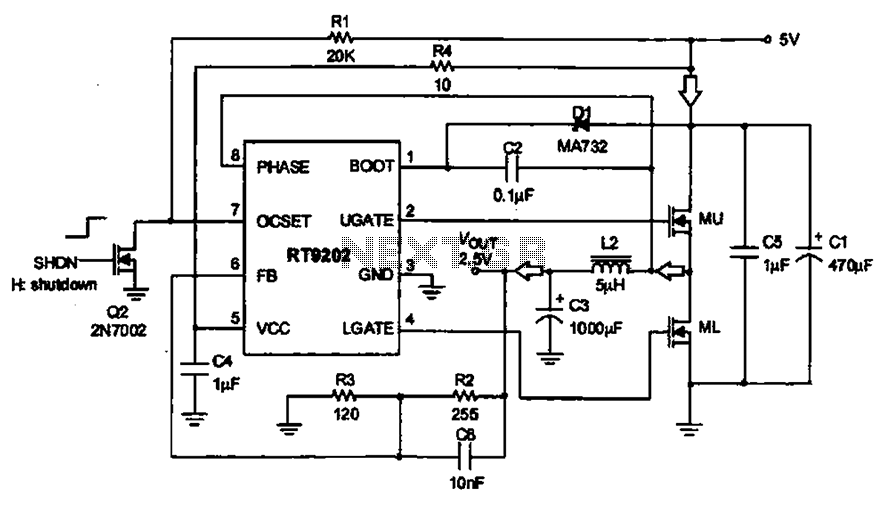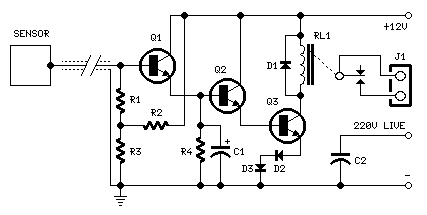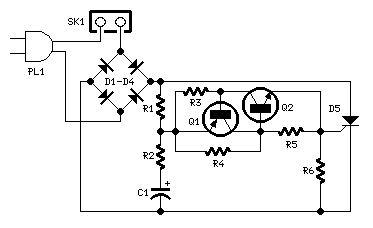
OVER LIGHT SENSOR ALARM CIRCUIT
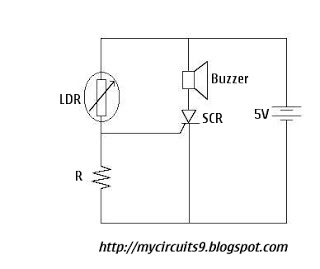
The Light Dependent Resistor (LDR) is a variable resistor whose resistance decreases as light intensity increases. Under normal light conditions, the resistance of the LDR is sufficiently high, resulting in an inadequate voltage across resistor R to activate the Silicon Controlled Rectifier (SCR). However, when exposed to intense light, the resistance of the LDR decreases, causing the voltage drop across resistor R to become sufficient to trigger the SCR. As a result, the buzzer emits an alarm sound. It is important to note that if the intense light source is removed, the buzzer will continue to sound the alarm, as the SCR remains triggered and the gate loses control.
The circuit utilizes an LDR in conjunction with a resistor (R) and an SCR to create a light-sensitive alarm system. The LDR is connected in a voltage divider configuration with resistor R, forming a potential divider that determines the voltage at the gate of the SCR. When the ambient light level is low, the high resistance of the LDR results in a low voltage across R, keeping the SCR in an off state.
As light intensity increases, the resistance of the LDR decreases, leading to a higher voltage across R. This voltage must exceed the gate trigger voltage of the SCR to turn it on. Once activated, the SCR allows current to flow through the buzzer, producing an audible alarm. The SCR remains in the conducting state even if the light intensity drops back below the threshold, due to its latching behavior, which ensures that the alarm continues to sound until the power is interrupted or the circuit is reset.
This design is suitable for applications requiring a light-sensitive alarm system, such as security systems or automated alerts in response to environmental changes. Proper selection of resistor R and the LDR is crucial to ensure the desired sensitivity and response time of the circuit. Additionally, considerations for power supply and buzzer specifications should be made to ensure compatibility and reliable operation.The LDR is a variable resistor whose resistance decreases with increase in light intensity. When the light falling on an LDR has normal intensity, its Resistance is large enough and the voltage across R is insufficient to trigger the SCR. However, when light falling on LDR is of large intensity, the Resistance of LDR falls and voltage drop across
R becames large enough to trigger the SCR. Consequently the buzzer sounds the alarm. It may be noted that if the strong light disappears the buzzer continues to sound the alarm. It is because once the SCR is triggered the gate loses its control. 🔗 External reference
The circuit utilizes an LDR in conjunction with a resistor (R) and an SCR to create a light-sensitive alarm system. The LDR is connected in a voltage divider configuration with resistor R, forming a potential divider that determines the voltage at the gate of the SCR. When the ambient light level is low, the high resistance of the LDR results in a low voltage across R, keeping the SCR in an off state.
As light intensity increases, the resistance of the LDR decreases, leading to a higher voltage across R. This voltage must exceed the gate trigger voltage of the SCR to turn it on. Once activated, the SCR allows current to flow through the buzzer, producing an audible alarm. The SCR remains in the conducting state even if the light intensity drops back below the threshold, due to its latching behavior, which ensures that the alarm continues to sound until the power is interrupted or the circuit is reset.
This design is suitable for applications requiring a light-sensitive alarm system, such as security systems or automated alerts in response to environmental changes. Proper selection of resistor R and the LDR is crucial to ensure the desired sensitivity and response time of the circuit. Additionally, considerations for power supply and buzzer specifications should be made to ensure compatibility and reliable operation.The LDR is a variable resistor whose resistance decreases with increase in light intensity. When the light falling on an LDR has normal intensity, its Resistance is large enough and the voltage across R is insufficient to trigger the SCR. However, when light falling on LDR is of large intensity, the Resistance of LDR falls and voltage drop across
R becames large enough to trigger the SCR. Consequently the buzzer sounds the alarm. It may be noted that if the strong light disappears the buzzer continues to sound the alarm. It is because once the SCR is triggered the gate loses its control. 🔗 External reference
